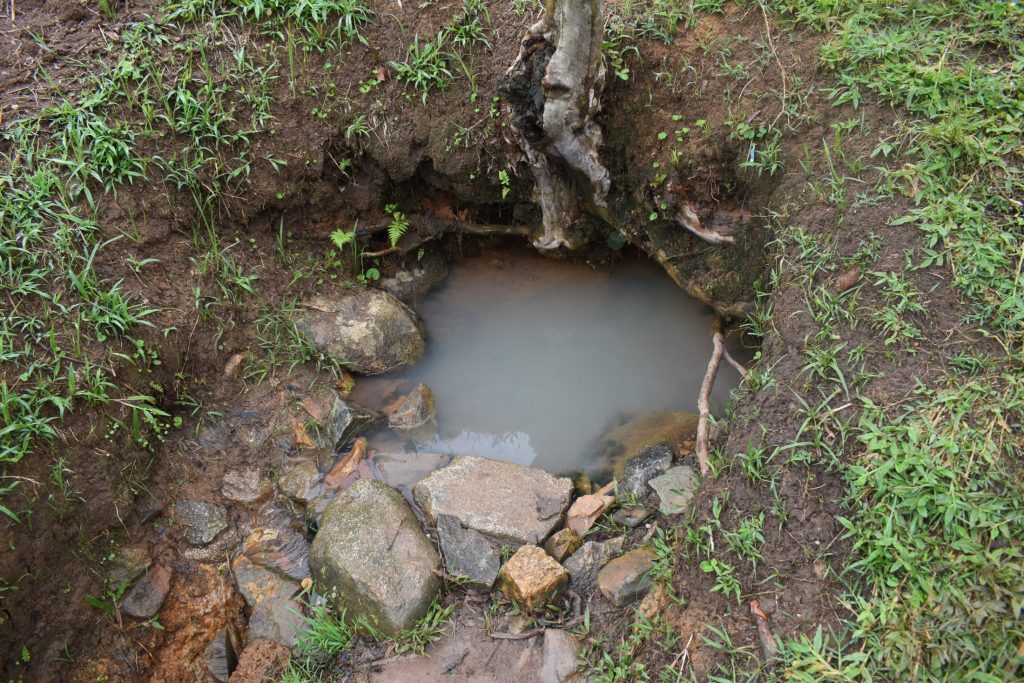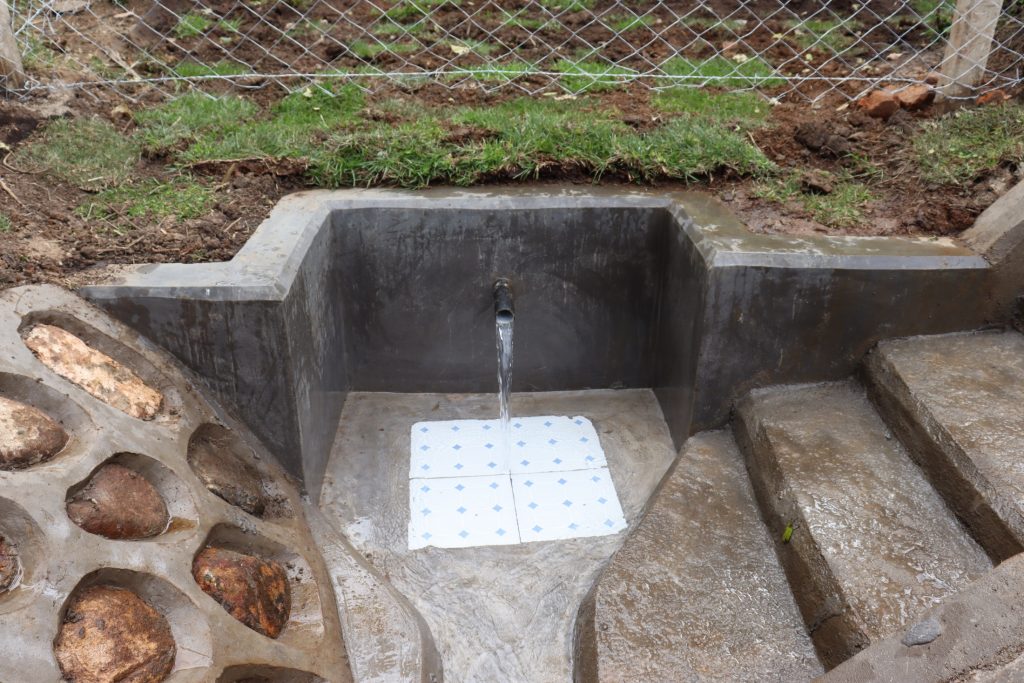What we learn together
How Spring Protection Works
Springs have been used by local communities as a source of water supply for many years. Community acceptance, low operating and maintenance costs, and ease of community management make springs quite effective for supplying rural communities with water.
Springs occur where water from an underground aquifer flows out of the ground to the surface. It usually originates from rainwater (Figure 1, “a”) that has seeped into the ground and filtered through the layers of sediment (Figure 1, “d”) until it reaches an impervious layer of sediment or rock (Figure 1, “e”). At the place where that impervious layer reaches near the surface of the land, water flows out of the ground and forms the spring. Due to the natural filtration, spring water can be of good quality microbiologically only if the spring channel and source are well protected from sources of contamination, such as animal waste and pesticides.
Figure 1: The formation of a naturally occurring spring (Source: SKAT, 2001)
The Water Project’s spring protection program is in Western Kenya, where groundwater is plentiful and many communities are using spring water. Our goal is to build the infrastructure required for 1) protecting the water from sources of contamination, 2) creating a collection area where spring water can be easily accessed, and 3) installing a chlorine dispenser to mitigate any remaining microbial contamination.
Figure 2: An illustration of the catchment area that TWP protects using a drainage channel and fence (Source: SKAT, 2001)
To establish a protected catchment area, we build a fence and dig a drainage channel about 10m uphill from the eye of the spring. If there are any sources of contamination on the ground uphill from the spring (e.g, animal waste or a farm using pesticides), water can wash those contaminants downhill. The drainage channel, or diversion channel, is like a moat that diverts any surface water running down the hill away from the spring. The fence also ensures that no humans or animals can access and cause contamination in the area that feeds directly into the spring water.
Next, we dig down to the eye of the spring and build infrastructure that allows the spring water to flow through a delivery pipe that is elevated off the ground. Many natural, unprotected springs accumulate in small pools at the ground surface, where people fetch water by submerging their water collection containers into the water. This leaves the water exposed to all types of contamination and may even cause sickness for the people who have to wade into the pool to collect water. The Water Project also installs a floor beneath the pipe and stairs to allow people to access the delivery pipe more easily. By installing the delivery pipe and surrounding infrastructure, the water becomes more accessible and safer to access.


Finally, we install a chlorine dispenser at every spring we protect. While the ground naturally filters spring water, the water quality is not always perfect. In order to ensure that the water is clean by the time people are drinking it, we ensure each spring has a chlorine dispenser and the community is taught about how to use the chlorine to clean their containers and treat their water.
Home More Like ThisTweet